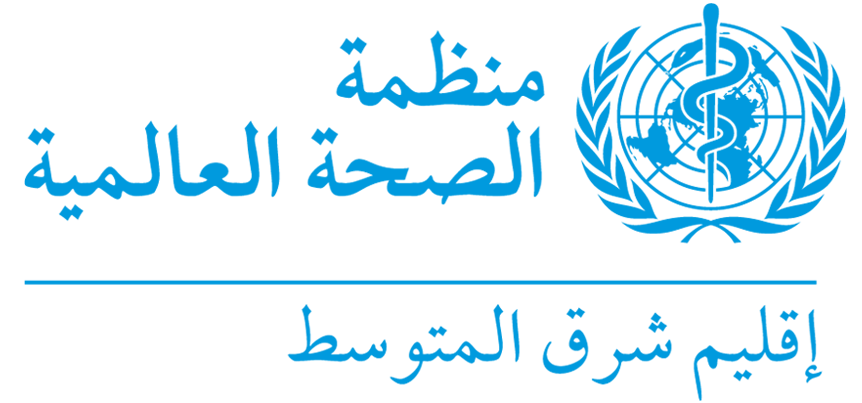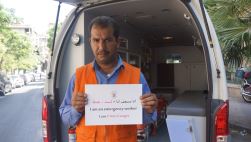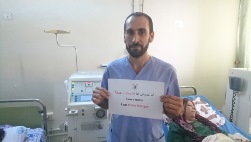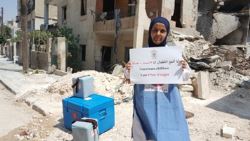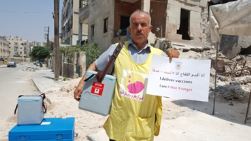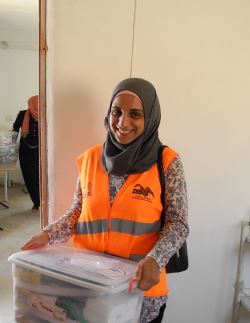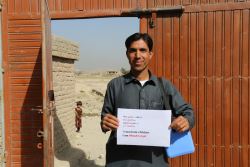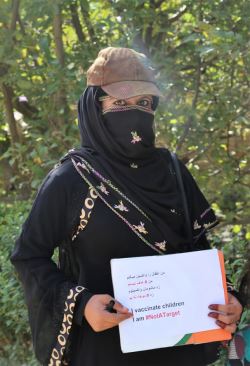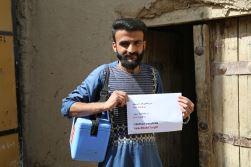منظمة الصحة العالمية تنقل الإمدادات الطبية جواً لعلاج المصابين في الزلزال الذي ضرب جمهوريه إيران الإسلامية والعراق
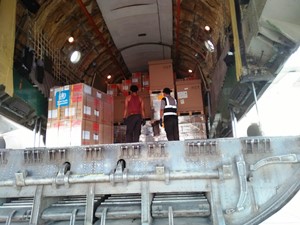
16 تشرين الثاني/نوفمبر 2017، القاهرة، مصر - نقلت منظمة الصحة العالمية المجموعات والإمدادات العلاجية الطبية للجروح جواً إلى جمهورية إيران الإسلامية لدعم معالجة آلاف المصابين نتيجة للزلزال الأخير الذي ضرب المنطقة الحدودية بين جمهورية إيران الإسلامية والعراق.
ونقلت المنظمة الإمدادات، التي تكفي لتقديم الرعاية الجراحية لما يصل إلى 4000 جريح، وذلك من المركز اللوجستي للطوارئ التابع لمنظمة الصحة العالمية في دبي إلى مقاطعة كرمانشاه في غرب جمهورية إيران الإسلامية في 16 تشرين الثاني/نوفمبر في الساعة 10:30 صباحاً بالتوقيت المحلي. وقد سُلِمَت هذه الإمدادات على الفور إلى المستشفيات وغيرها من المرافق الصحية التي تستقبل الجرحى.
وقال الدكتور ميشيل ثيرين، مدير الطوارئ الإقليمي لمنظمة الصحة العالمية "تتوفر مجموعات إضافية لعلاج الجروح في المركز اللوجستي للطوارئ التابع لمنظمة الصحة العالمية في دبي، وسوف تُسَلَّم حسب الحاجة إلى المرافق الصحية التي تُبلّغ عن وجود نقص. كما سيتم التركيز على تحديد الاحتياجات الصحية الخاصة نتيجة لدرجات البرودة الحالية في المناطق المتضررة". وأضاف "أنه في حين لا توجد صلة مباشرة بين الزلازل وحدوث فاشيات الأمراض، إلا أن هناك حاجة أيضاً إلى الرصد الدقيق للأمراض المعدية وبخاصة الأمراض المنقولة بالمياه".
وقد أصيب ما يقرب من 9400 إنسان في جمهورية إيران الإسلامية نتيجة للزلزال، من بينهم أكثر من 1000 إنسان نقلوا إلى المستشفى في محافظة كرمانشاه بجروح خطيرة، و340 آخرين نقلوا إلى المستشفيات في المحافظات المجاورة، وهذا يشمل طهران.
وتفيد البلاغات أن مدينتا سار بول ذهب وقصر شيرين في محافظة كرمانشاه، اللتان يبلغ عدد سكانهما حوالي 115 ألف نسمة، قد لحقت بهما أضرار جسيمة، حيث دمر الزلزال ما يقرب من 80% من البنى الأساسية. واضطر أحد المستشفيات الرئيسية في المقاطعة إلى الإغلاق، وتضرَّر 49 مرفقاً صحياً آخر، لكنها ما زالت مفتوحة.
وفي العراق، شعر الناس بالزلزال في المدن الكبرى في السليمانية وحلبجة وأربيل ودهوك، وسقط ما مجموعه 8 قتلى و525 جريحاً. وكانت أكثر المناطق تضرراً منطقة دربنديخان في شمال السليمانية، حيث ألحق الزلزال أضراراً بمستشفى دربنديخان ومستشفى شاره زور للأمومة.
وعقب الزلزال مباشرة، نشر مكتب منظمة الصحة العالمية في العراق فريقاً طبياً وثلاث سيارات إسعاف، وقدم 4 خيام ولوازم للطوارئ المنقذة للحياة بما يكفي لإجراء 200 عملية جراحية، وذلك إلى مستشفيات محافظة السليمانية التي استقبلت الحالات الحرجة.
وتواصل منظمة الصحة العالمية العمل بشكل وثيق مع السلطات الصحية الوطنية في جمهورية إيران الإسلامية والعراق لرصد الأثر الصحي للزلزال والاستجابة للاحتياجات العاجلة.
العاملون الصحيون في إقليم شرق المتوسط ينقذون الأرواح و #ليسوا_هدفا للأعمال العدائية ( #NotATarget )
18 آب/أغسطس 2017 - بالرغم من إدانات منظمة الصحة العالمية والشركاء الصحيين، فإن الهجمات على مرافق الرعاية الصحية في شرق المتوسط لم تنخفض هذا العام.
وفي الأشهر الثلاثة الأولى من عام 2017، أُبلغ عن أكثر من 152 هجوماً على مرافق الرعاية الصحية في 9 بلدان في الإقليم، مقابل 57 هجوماً في نفس الوقت من عام 2016.
ووراء هذه الأرقام الرهيبة هناك أناس حقيقيون تزهق أرواحهم. ويواجه العاملون الصحيون في مناطق النزاع، في كل يوم، مخاطر وصعوبات جسيمة لتوفير الرعاية لمن هم في أشد الحاجة إليها.
ولا يزال الآلاف من العاملين الصحيين في جميع أنحاء الإقليم ملتزمين بالقسم الذي تعهدوا به لإنقاذ الأرواح، وأحيانا يخاطرون بحياتهم عن قصد، لأنهم يرفضون التخلي عن مرضاهم.
واليوم العالمي للعمل الإنساني هو الوقت المناسب لنا لنقف مع العاملين الصحيين، ونظهر لهم أننا نفي بالتزاماتنا الأخلاقية والبشرية في الحفاظ على سلامتهم.
معرض الصور
|
يقول ماهر «لقد نجوت والحمد الله". ويضيف "بعد عملي لمدة 22 عاماً في خدمات الطوارئ الوطنية، وبعد أن خضعت لعمليات جراحية لخمسة أشهر، عدت مرة أخرى لأمارس العمل الذي أرغبه وهو: مساعدة الجرحى في هذا الصراع الشائن". |
يقول ياسر "على الرغم من أنني من المفترض أن أعمل 8 ساعات يومياً فإننى أعمل أحيانا لمدة 17 ساعة لسد النقص فى العاملين فى التمريض". ويضيف "كثيراً ما أرى المرضى القادمين إلى المستشفى وهم غير قادرين على العثور على الأدوية التي يحتاجونها في المستشفيات الأخرى. وهذا يصيبني بالحزن والإحباط. ومع أننا نحصل على دعم من المنظمات غير الحكومية التي تدعمها منظمة الصحة العالمية، فإننا أحياناً نجمع المال في ما بيننا لشراء هذه الأدوية للمرضى، وذلك بالرغم من صعوبة وضعنا المالي. إنه عمل إنساني علينا أن نقوم به". |
|
"كنت أطعّم الأطفال باللقاحات في حلب لأكثر من 15 عاماً. وواصلت أداء واجباتي في مراكز صحية مختلفة في حلب نتيجة لتصاعد العنف وكثافة القتال في المنطقة مما يؤثر على المستشفيات ". وأضافت ابتسام "لقد كان للتحسن الأخير في الوضع الأمني في حلب أثر إيجابي على خدمات التلقيح، وأشعر الآن بقدر أكبر من الأمان". |
يقول حسن: "هربت مع عائلتي بسبب تصاعد العنف في المنطقة، والآن أقدم اللقاحات في المنطقة الصحية الرئيسية في مدينة حلب". "عندما حوصرت مدينة حلب الشرقية، بذلنا قصارى جهدنا لتقديم اللقاحات إلى المرافق الصحية هناك؛ لكننا فشلنا عدة مرات بسبب القتال المحتدم، وعدم الحصول على الموافقات من الأطراف على الأرض وبسبب استهداف العاملين الصحيين في عدة مناسبات ". |
|
"إن العمل الذي أقوم به مجزٍ للغاية، ليس من الناحية المالية ولكن من الناحية العاطفية. عندما أؤدي عملي، فإنه يشعرني بالارتياح لأنني أرعى الناس هنا. عندما أرى مرضاي يتمتعون بالصحة والسعادة تغمرني السعادة أنا أيضاً. نحن لا نعطي المرضى خدمة صحية فحسب، بل نوفر أيضاً للمجتمعات فرصة لمناقشة المشاكل الأخرى التي يواجهونها". |
 رائد الشيلح من الضفة الغربية يعمل مسعفاً في جمعية الهلال الأحمر الفلسطيني منذ 14 عاما. ويواجه العاملون في الإسعاف والعاملون في الطوارئ في الضفة الغربية مخاطر كبيرة في مواجهة الصراع. في الماضي، تعرض رائد للاعتداء والشتائم. "العمل كممارس في الطوارئ والمساعدات الإنسانية في فلسطين ليس بالأمر اليسير. إننا نواجه العديد من العوائق والمخاطر للوصول إلى المحتاجين وتقديم الدعم المطلوب تقديمه. لن أكذب وأقول أن مثل هذه الحوادث لا تخيفني أو لا تهمني حياتي. أنا أخشى علي حياتي، ولكن في الوقت نفسه، لا أستطيع التفكير في القيام بأي عمل آخر. فعملي هو جزء من هويتي ". رائد الشيلح من الضفة الغربية يعمل مسعفاً في جمعية الهلال الأحمر الفلسطيني منذ 14 عاما. ويواجه العاملون في الإسعاف والعاملون في الطوارئ في الضفة الغربية مخاطر كبيرة في مواجهة الصراع. في الماضي، تعرض رائد للاعتداء والشتائم. "العمل كممارس في الطوارئ والمساعدات الإنسانية في فلسطين ليس بالأمر اليسير. إننا نواجه العديد من العوائق والمخاطر للوصول إلى المحتاجين وتقديم الدعم المطلوب تقديمه. لن أكذب وأقول أن مثل هذه الحوادث لا تخيفني أو لا تهمني حياتي. أنا أخشى علي حياتي، ولكن في الوقت نفسه، لا أستطيع التفكير في القيام بأي عمل آخر. فعملي هو جزء من هويتي ". |
 محمود المصري، من غزة، يعمل مساعداً متطوعا في جمعية الهلال الأحمر الفلسطيني منذ سنة. وبينما يتطوع للعمل في المجتمع، فإنه ينهي أيضا دراسته في السنة الرابعة في جامعة القدس المفتوحة، ويدرس الإدارة الصحية. محمود متحمس لمساعدة الآخرين والقيام بالعمل الإنساني، وانضم إلى الهلال الأحمر لإحداث تغيير في حياة الناس. |
ويقول أحمد "انضممت إلى برنامج التلقيح لأنني أريد أن أخدم بلدي وأن أرى الناس محميين من الأمراض المعدية. الوضع الأمني جيد في المنطقة التي أعمل فيها، ولكن للأسف العديد من المحافظات لا تزال تعاني من الصراع وانعدام الأمن، مما يجعل جهود التمنيع أكثر صعوبة". |
|
زهراء انضمت مؤخراً إلى برنامج التلقيح الوطني في أفغانستان وتعمل في التمنيع باللقاحات في كابول. "أنا أحب عملي وأفتخر به. وأريد أن أساهم في جهود القضاء على الأمراض ومساعدة الأطفال الأفغان على النمو الصحي". |
"الجميع تقريبا في منطقتي يتقبل اللقاحات عندما نقدمها لهم. وإذا رفض أحدهم في البداية، فإننا نقنعهم بتلقيح أطفالهم من خلال تزويدهم بالمعلومات حول فوائد التلقيح وضرورته لصحة الأطفال". |
WHO and Federal Ministry of Health of Somalia call for urgent support to address measles outbreak in Somalia
16 August 2017 – As millions of people in Somalia remain trapped in a devastating cycle of hunger and disease, WHO and health partners are working with national health authorities to save lives and reach the most vulnerable with essential health services.
More than 2 years of insufficient rainfall and poor harvests have led to drought, food insecurity and a real risk of famine. Malnutrition, mass displacement as a result of the drought, and lack of access to clean water and sanitation have created ideal conditions for infectious disease outbreaks.
“Somalia is facing one of the worst humanitarian crises in the world. Millions of people, already on the brink of famine, are now at risk of rapidly spreading infectious diseases like cholera and measles. Normally, these diseases are easy to treat and prevent, but they can turn deadly when people are living in overcrowded spaces and are too weak to fight off infection,” said Dr Ghulam Popal, WHO Representative in Somalia.
Drought has led to a lack of clean water and the largest cholera outbreak in the last 5 years, with more than 57 000 cases and 809 cumulative deaths reported as of 31 July 2017. Health partners, together with national health authorities, scaled up its efforts to respond to this event by setting up cholera treatment centers in affected districts and providing support in water and sanitation to prevent the spread of the disease. In March, WHO and partners conducted Somalia’s first national oral cholera vaccination campaign, and successfully reached over 450 000 vulnerable people. Due to ongoing efforts, the number of cholera cases in Somalia has declined, from 13 656 cases of acute watery diarrhoea/cholera in May 2017 to 11 228 cases in June 2017.
Somalia is also facing its worst measles outbreak in 4 years, with over 14 823 suspected cases reported in 2017 (as of 31 July), compared to 5000–10 000 cases per year since 2014. The situation is especially critical for millions of under-vaccinated, weak and hungry children who are more susceptible to contracting infectious diseases. More than 80% of those affected by the current outbreak are children under 10 year of age.
In early 2017, WHO and partners, in collaboration with national health authorities, vaccinated almost 600 000 children aged 6 months to 5 years for measles in hard-to-reach and hotspot areas across the country. Despite these efforts, the transmission of measles continues, compounded by the ongoing pre-famine situation, continued mass displacement, and undernourished children living in unhygienic conditions.
In order to contain the outbreak, a nationwide campaign is planned for November 2017 to stop transmission of the disease, targeting 4.2 million children. The campaign will also intensify efforts to strengthen routine immunization and reach unvaccinated children to boost their immunity. As shown by the response to the cholera outbreak, with the right interventions, health authorities are confident that similar success may be seen in controlling the measles outbreak.
US$ 14.4 million (a cost of US$ 3.36 per child) is required by WHO and health partners to conduct the measles vaccination campaign in November 2017, of which WHO required US$ 6.8 million. To date, no funding has been received.
Related link
WHO responds to health needs of South Sudanese refugees in Sudan
Almost 420 000 South Sudanese refugees are currently hosted in Sudan, of whom almost 140 000 arrived in 2017. In May 2017 alone, Sudan received almost 2000 new arrivals from South Sudan every day.
The majority of refugees have settled in camps in White Nile State, while others are in East Darfur State and West/South/North Kordofan states.
